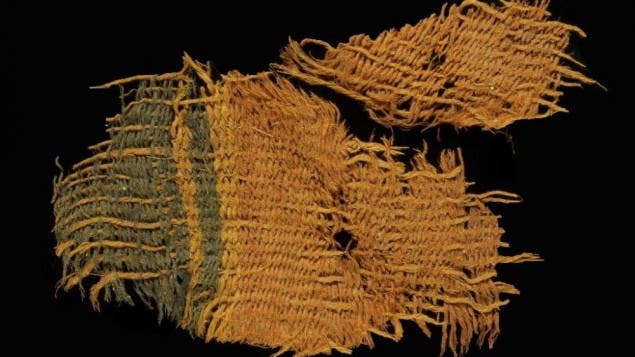Although it is possible to shape your hair either by straightening or curling, the moment it touches water, the hair will return to its original shape. By exploiting this property, researchers at Harvard University have devised a wool-based material that has hair-like shape memory, which might inspire a new generation of textiles and smart, one-size-fits-all clothing that stretches or shrinks based on a person’s measurements.

The secret to hair’s shape memory is keratin, a fibrous protein arranged in a chain of hierarchical structures. One single chain of keratin is itself arranged in a spring-like structure known as the alpha-helix. When two of these chains twist together, they form a coiled-coil structure. Many of these latter structures are assembled into protofilaments, before eventually joining together to form large fibers of hair.
This arrangement of the alpha-helix and connective chemical bonds is one of the reasons why hair is as strong as steel. It also explains the shape memory of the hair strand: when fibers are exposed to a particular stimulus, such as heat from a hair straightener, the spring-like structures uncoil. The fibers will coil back into their original shape when triggered by a new stimulus, such as water.
Engineers at Harvard John A. Paulson School of Engineering and Applied Sciences (SEAS) found these characteristics very appealing. They extracted keratin from leftover Agora wool from textile manufacturing, which they then incorporated into a 3-D printable, biocompatible material.
To program a particular shape in the material’s memory, a solution of hydrogen peroxide and monosodium phosphate was employed. The sheet of 3-D printed, recycled keratin can then be molded into any desired shape until triggered to return to its original design.
For instance, one such keratin sheet was programmed to fold into a complex origami star as its original shape. The keratin star was then bathed in water, becoming malleable. The unfolded sheet was then rolled into a tight tube. Once the sheet dried, it was locked into a functional tube. But when the tube was put back in water, it unrolled and folded back into the origami star.
“With this project, we have shown that not only can we recycle wool but we can build things out of the recycled wool that have never been imagined before,” said Kit Parker, the Tarr Family Professor of Bioengineering and Applied Physics at SEAS and senior author of the paper. “The implications for the sustainability of natural resources are clear. With recycled keratin protein, we can do just as much, or more, than what has been done by shearing animals to date and, in doing so, reduce the environmental impact of the textile and fashion industry.”
According to Parker and colleagues, these keratin sheets can be employed in a vast range of applications, from textile to tissue engineering. Imagine brassieres whose cup size and shape can be molded and shaped every day to fit a person’s needs and measurements, for instance.
“We are continuing to reimagine textiles by using biological molecules as engineering substrates like they have never been used before,” Parker said.
The findings appeared in today the journal Nature Materials.




